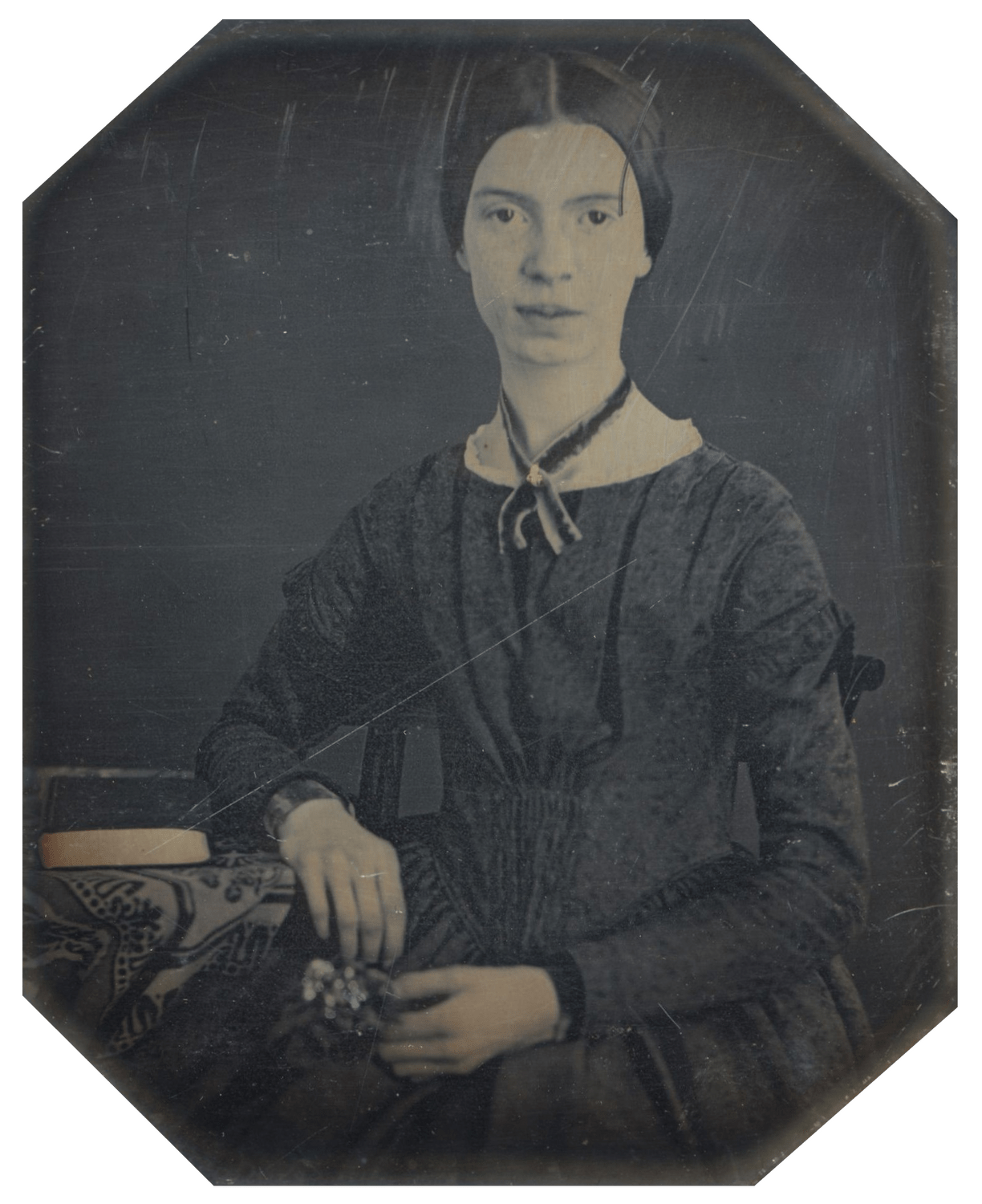Emily Dickinson is one of the most influential and revered poets in American literature.
She was a pioneer of her time, creating a unique style of writing that was both poetic and complex. Her poems were filled with emotion, truth, and beauty. She wrote extensively about love, death, God, nature, and the struggles of life.
Emily Dickinson’s life was filled with tragedy and yet she remained resilient in her pursuits as a poet. She was a trailblazer in many ways, tackling topics that were considered taboo at the time such as gender roles, death and immortality.
In this article we’ll explore Emily Dickinson’s life and legacy. We’ll take a look at her personal struggles, her writing process and accomplishments, as well as how her work has endured throughout the years.
Introduction to Emily Dickinson and Her Work
As one of America’s most iconic poets, Emily Dickinson is renowned for her lyrical exploration of love, death, grief, and spirituality. Writing mostly in solitude during the mid-nineteenth century, Dickinson penned nearly 2,000 poems that have stood—and continue to stand—as a testament to her enduring creative spirit.
In 1858, when she was only 24 years old, Dickinson self-published a small book of poetry titled “Poems by Emily.” This work laid the foundation for her succesful literary career and featured several of her most iconic pieces including “The Grass So Little Has To Do” and “A Bird Came Down the Walk”. Since then Dickinson’s works have become widely anthologized and recognized as some of the most groundbreaking literature in American history.
Through her unparalleled stylistic innovations—which include unconventional meter and rhyme schemes combined with unique diction—Dickinson revolutionized poetic expression in America and around the world. By blending haunting imagery with timeless symbolism and wry wit, Dickinson has become a source of inspiration to budding authors everywhere.
Her Life and Struggles
Emily Dickinson’s life was filled with accomplishments that spanned the entirety of her 61 years. From an early age, she wrote prolifically and by the time she was a teenager, she had already developed a deep appreciation for the written word and its impact on readers. Even though her works were not widely published during her lifetime, they were widely circulated among members of literary circles who regularly praised and admired her works.
Though much of Emily Dickinson’s life was spent in relative seclusion, she was far from idle. Dickinson deeply explored the human experience through her writings and thoughtfully considered all aspects of life’s triumphs, successes and failures. Her wrestling with faith, love, death and life’s mysteries highlighted many of her writings and gave readers insight into the mind of an iconic poet who helped to shape modern-day poetry we know today.
Dickinson’s structural innovation and original language also gave rise to new literary forms that established her as a revolutionary poet. By pushing boundaries within literature, Emily Dickinson reminded readers that beauty can be found in unexpected places while introducing them to the power behind words when they are used expand our understanding of the world around us.
The Impact of Her Poetry in the 19th Century
The impact of Emily Dickinson’s poetry in the 19th century was profound. Her experimentation with form, language, and expression was revolutionary for the time period, and her unique perspective had a lasting impact on the world of literature.
Her refusal to conform to traditional poetic conventions set her apart from her peers and made her works some of the most influential of the era. Her unique style and subject matter were a stark contrast to the popular literature of the day, which often focused on more romantic themes.
Not only were Dickinson’s works groundbreaking in terms of form and expression, they also explored concepts that were considered taboo at that time. Dickinson used her poetry to explore topics such as death, mortality, faith, and love with honesty and insight. Her work served as a source of inspiration for many writers that followed her lead.
In addition to pushing boundaries with her chosen topics, Dickinson also led a “revolution in punctuation” by using dashes instead of commas or periods to separate words or statements. This newfound freedom gave readers new ways to interpret words and helped establish a new era for poetry punctuation.
Transitioning to Modern Contexts of Her Work
Emily Dickinson’s legacy still resonates in literature and culture today. She is considered a pioneer for women’s rights, her works inspiring and challenging perspectives on gender roles during the nineteenth century. Her depiction of themes such as death and mortality, love, nature, and religion has made her a timeless poet.
Dickinson’s transition to modern contexts is evident in countless interpretations of her work seen in television, movies, art, music, and literature. Several popular films have centered around her work such as A Quiet Passion (2016), Wild Nights with Emily (2018), and Emily (2020). Her words have also been adapted in musical productions like The Belle of Amherst (1976) and The Emily Dickinson Project (2015).
Her influence can be found in the many books written by modern authors inspired by her poetry, including Sylvia Plath’s novel The Bell Jar and Danielle Steel’s works. Several contemporary poets continue to be influenced by her style of writing as well such as Sharon Olds, Adrienne Rich, Alison Hawthorne Deming, Jane Hirschfield and Alicia Ostriker.
The relevance of Dickinson’s work persists through its adaptations for new audiences—demonstrated through its frequent appearance on stage shows like Glee and on social media platforms like Instagram—continuing to inspire generations.
How Dickinson’s Poetry Has Changed Over Time
The works of Emily Dickinson have become increasingly popular over the years, and her poetry has undergone a transformation in the way it is read and interpreted. For example, one of Dickinson’s most famous works, “I heard a Fly buzz—when I died,” has been reinterpreted to mean something different than what she originally intended.
In her lifetime, Dickinson was often praised for her unique style which eschewed the traditional rules of poetry. Since her death, however, scholars have argued that Dickinson’s work should be read as if it follows traditional poetic form and structure. This has led to a more expansive interpretation of both the content and form of her poetry.
Moreover, modern audiences are often looking for meaning and significance in her words. These attempts to uncover hidden meanings within the poet’s text have opened up new possibilities for interpretation that weren’t available during Dickinson’s lifetime. This has allowed readers to gain a newfound appreciation for the complexity and depth of many of her poems that was previously unrecognized or overlooked.
Clearly, Emily Dickinson’s legacy is continuing to live on as we look at her work through a different lens than ever before.
Rediscovering Dickinson’s Lasting Legacy
Emily Dickinson has gone down as one of the most influential poets in American history, and it is easy to understand why. Her unique use of language and imagery to explore complex themes of life and death, nature, love and spirituality make her work particularly captivating.
Dickinson’s influence can be seen in many aspects of modern culture. From the way her poetry has been adapted in popular music, film and stage productions to the way she has become a source of inspiration for many upcoming writers, her impact can still be felt today.
It is no wonder that Dickinson’s work is so widely appreciated – her words remain timeless even after centuries of change in language and culture. Through her innovative use of language, Dickinson created a style that was all her own. She also pushed the boundaries of traditional poetic form, writing some poems without traditional stanzas or rhyme schemes.
Dickinson’s lasting legacy serves as a reminder that it is possible to achieve great things through creativity and innovation. Even after she passed away in 1886, her words continue to inspire generations of writers and readers alike. By rediscovering Emily Dickinson’s pioneering voice we are reminded that powerful stories can come from anywhere, no matter how much time has passed.
In conclusion, Emily Dickinson remains one of the most well-known and influential poets of the 19th century to this day. Her poetry is full of remarkable insight, beauty, and truth, making her work as relevant today as it was in her time. Though her life largely remained a mystery, her posthumous success has cemented her legacy and will leave a lasting impact for generations to come.







